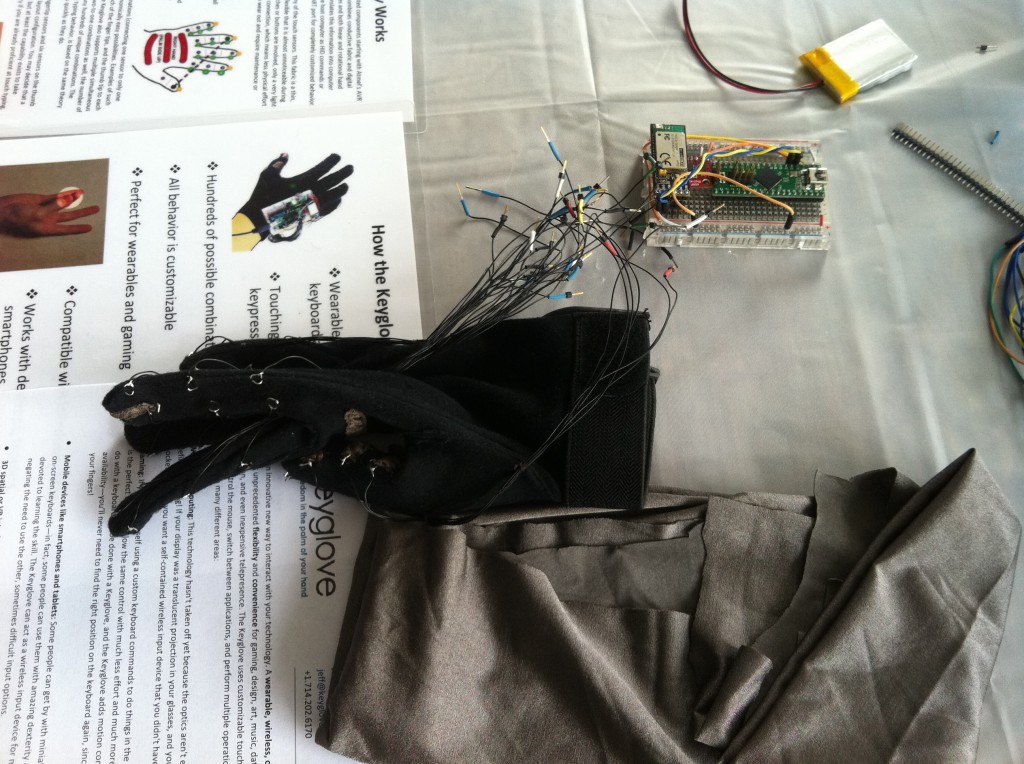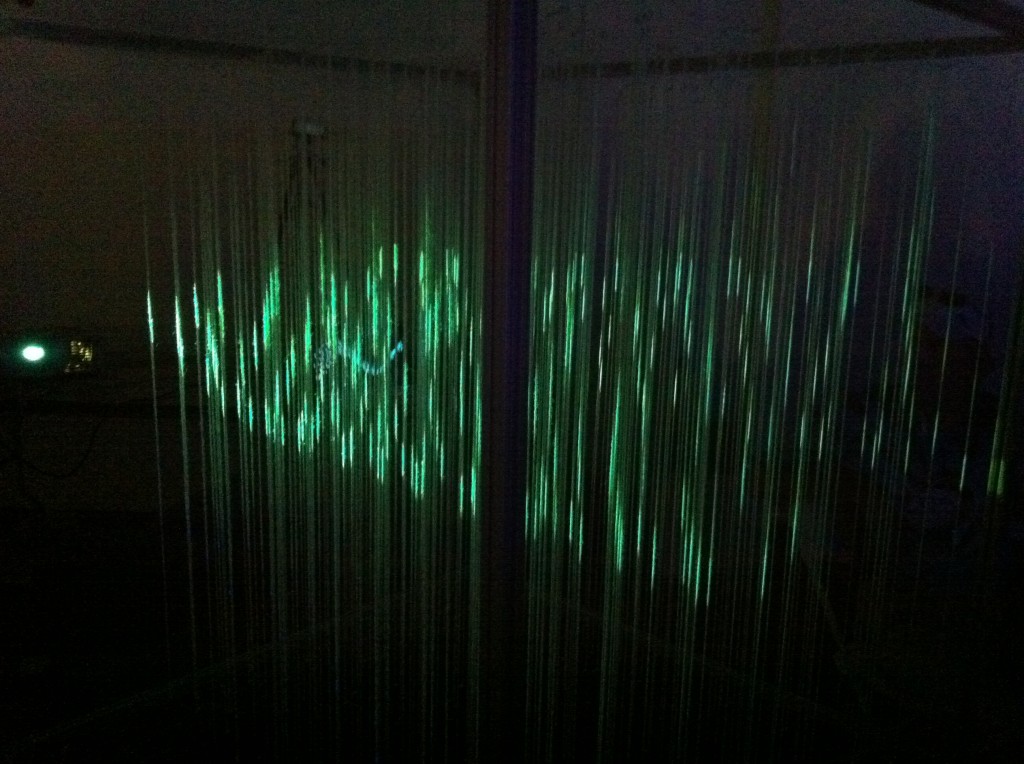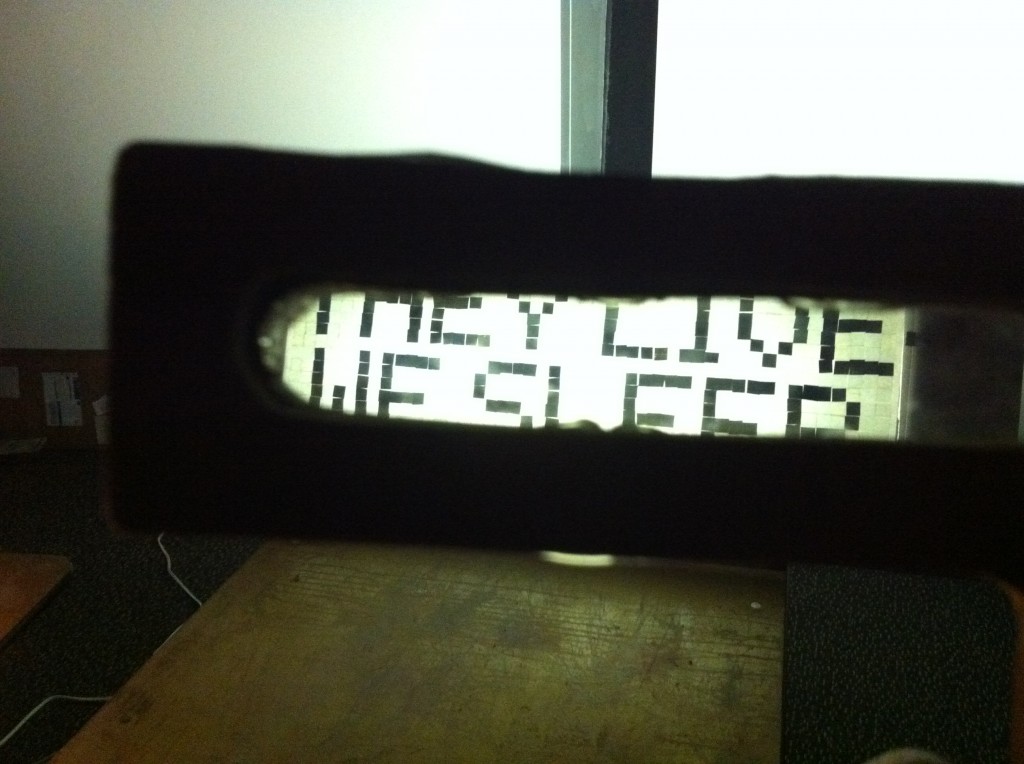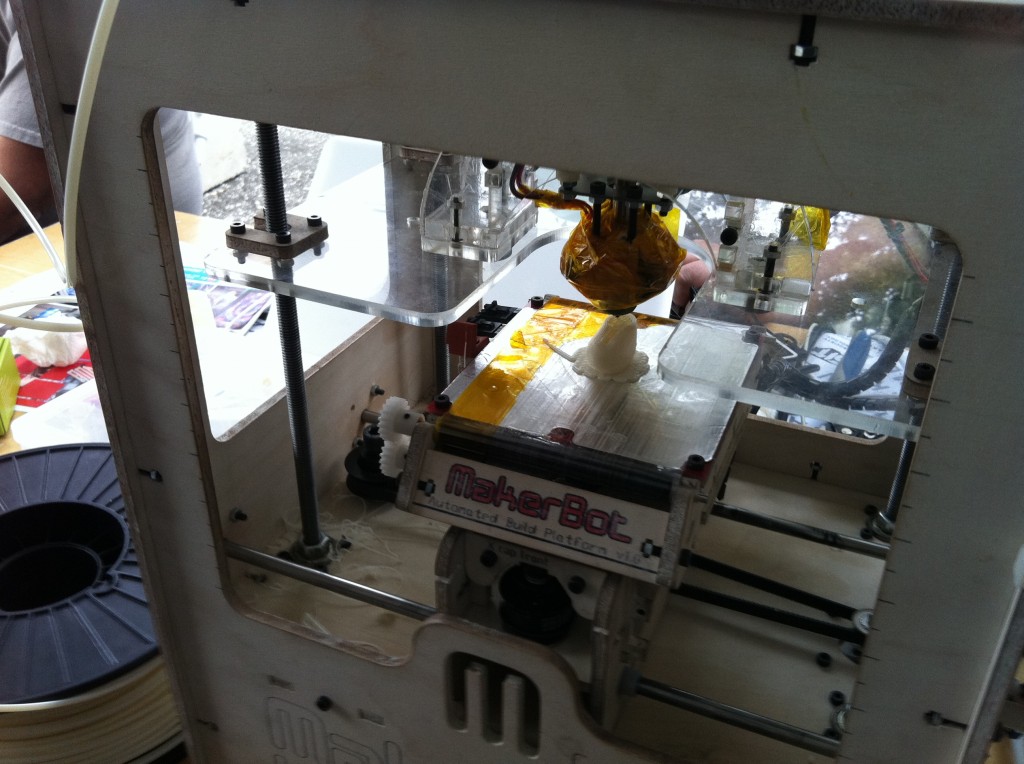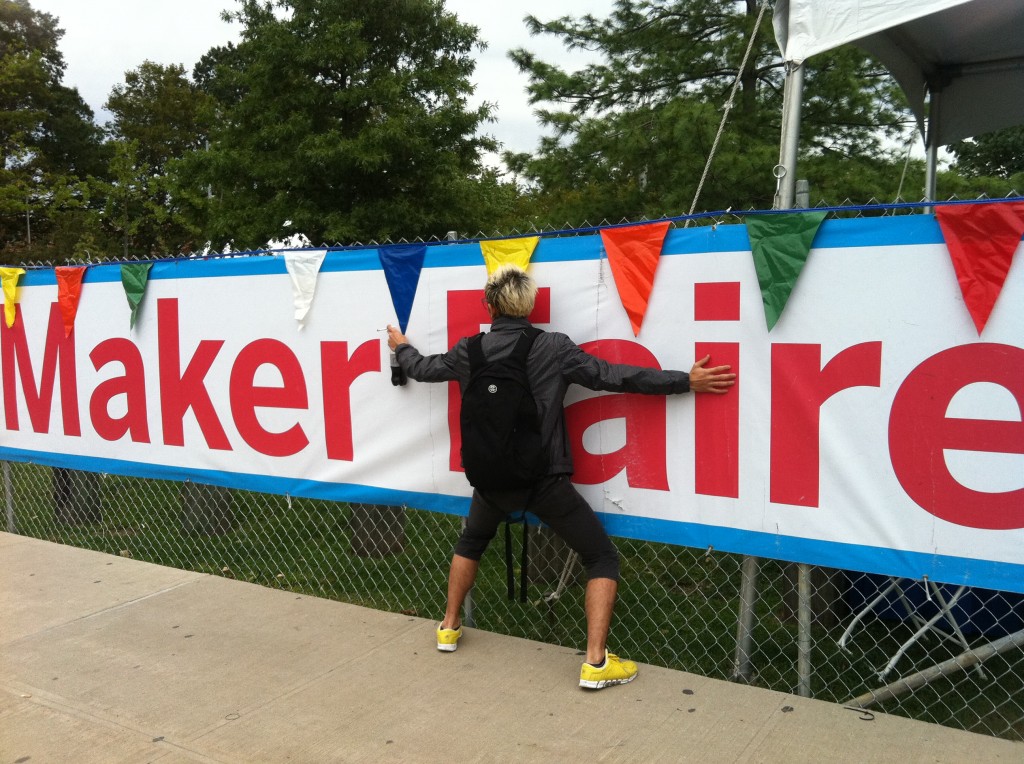Coming from an industrial design background and really interested in physical computing, the Maker Faire was a very fun experience for me. A live show of dissolving Mentos in Coke Zero, a huge dragon made entirely of junk that breathes fire, lamb gyros, products made by Arduino, 3d printers, toys playing instruments through MIDI, etc. are just some of the things I saw at the Maker Faire. Because I wanted to see how Arduino could be used, I first headed towards the Arduino tent.
The product that got me most excited inside the Arduino tent was a product entitled “Keyglove“ by Jeff Rowberg. This is because during my industrial design studying days, I remembered a concept mobile phone that used fingers to represent keys. What intrigued me the most was the possibility of Keyglove’s further development. Although people are used to QWERTY-based keyboards, it doesn’t necessarily mean it HAS to be the most comfortable. Because the wearable computing market is becoming very popular I believe the Keyglove will impact the world of gaming, design, art, music, etc. I’d love to see a further developed Keyglove where if I made a certain shape with my hand while putting on Keyglove, a 3D CAD software would automatically create the shape I’m making with my hands.
As I entered the indoor section of the Maker Faire, the work that first caught my eyes was the “Lumarca” designed by Matt Parker. Using a projection, Lumarca used a volumetric display to show viewers a three dimensional image in motion. When I first looked at it in the dark, I initially thought that it involved high technology. But once I asked the artist on the mechanism of Lumarca, I realized it was just a calculated projection in motion towards strings attached to boards. When I researched for Lumarca on the internet, I also realized the creators incorporated Kinect into Lumarca. They created a 3d projection portraying the exact movement of somebody moving infront of the Kinect. What’s so interesting is that the Lumarca need not require a 3d glass in order for people to see 3d.
Although it doesn’t require much technology, I also found “Hidden Messages – Magnetic and Polarized” by Robert Hermes to be very interesting. This was a good example to show that use of materials can make a big difference. People can view a hidden message once viewed with polarized viewers. In places such as airports where so much information is given such as different flight numbers and different timed flights, the use of polarized material where people can see through would be highly effective. People can have polarized tickets that allowed them to only see the information in airports that represented their specific flight.
Because I have an industrial design background, every time I passed by a 3d printer, I just wanted to buy it. Just last year, I had paid $2000 to create a fine mockup of one of my product designs in Korea. Seeing that a 3d printer now only costs about $1600 shocks me. There were 3D printers that worked by addition while there were 3D printers that worked by subtraction. Because I’ve already seen many printers that work by subtracting from the raw material, I was more interested on those printers that worked by addition. An example would be the “Ultimaker: the fast, affordable, large build volume, open source 3D printing” made by the Ultimaker. Just like its name, it was indeed a fast, affordable, open source 3d printer. It would accept almost any type of CAD file and would print in such detail that I couldn’t believe it. It created what seemed to me like a billion layers of shape in order to achieve the detail of the final product. It was very fun to see. There were just so many 3d printers!
I want to buy everything from Maker Faire!!!!

